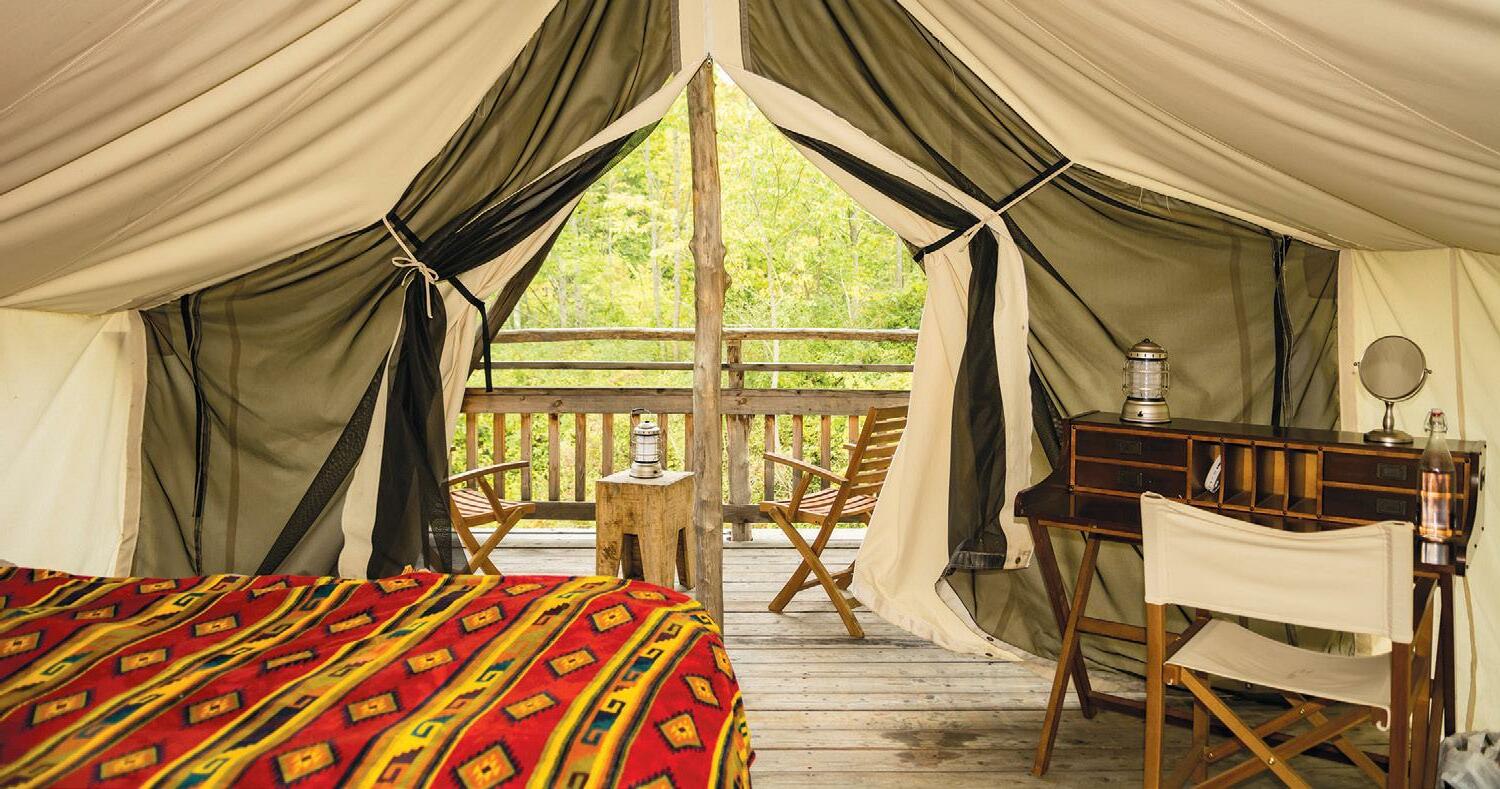
3 minute read
green living
UNPLUGGED ADVENTURES
ECO-TRIPPING FOR A DIGITAL DETOX
Advertisement
by Sheila Julson
Smartphones come in handy for emergencies or checking directions while traveling, but a brief glance at a website or social media can quickly turn into a lengthy scroll session, distracting us from why we go on vacation in the first place. For those that want to truly unplug, unique off-grid, eco-options beckon.
Remote and Quirky Camping
The National Park Service has many affordable campgrounds at parks, forests and lakeshores with little to no cell connectivity, allowing visitors to immerse themselves in nature. Listings of wilderness/backcountry camping sites, as well as front-country sites easily accessible by vehicles, can be found at nps.gov/subjects/camping/campground.htm.
State parks offer closer-to-home refuge from the digital world. California’s Hendy Woods State Park, in Philo, is brimming with old-growth redwoods. “A lot of people head way up north to Sequoia National Forest to see old-growth redwoods, but there are also redwood forests closer to Sonoma and Mendocino counties, and similarly along the coast,” says Milwaukee-based travel writer Kristine Hansen, contributor to Fodors.com, NationalGeographic.com and other travel outlets. “Standing beneath these towering trees, you can’t help but feel like a small part of this large and wild world.” Hendy Woods’ proximity to wine country allows explorers to drop by a winery or creamery and put together a quick picnic, she notes.
Locally owned campgrounds can offer an escape to a pre-cellphone era. Camp Wandawega, in Elkhorn, Wisconsin, has a storied past of hosting both sinners and saints, opening in 1928 as a speakeasy and later becoming a Catholic youth camp. The historic charm remains intact. “Spending a night here is like dialing it back to the 1950s. Think The Marvelous Mrs. Maisel’s upstate New York summer camp,” Hansen says. “You can climb into a treehouse or a glamping tent to completely unplug.”
Immersive Getaways
River rafting tours provide an escape from the virtual world, says John O’Brien, a scientist and environmental advocate who, with his wife, Kellie, owns Fairbanks Trails and Rivers Tour Company, in Fairbanks,
Alaska. “The moment that we shove off from the shore, we’re immediately on what we call ‘river time.’ It’s best at that point to put your phone and camera in airplane mode. We’re often in areas where there is no cell coverage,” he says. “There’s something to be said about just unplugging and being in the moment.”
Eco-activities such as river rafting might conjure up images of young, physically fit adventurers in rafts slapped by wild waves, but O’Brien notes river rafting is suitable for all ages and abilities. In tours with frame-style rafts, the guide does all the rowing. “If you are able to stand, walk and climb into and out of a raft, even with some assistance, you can go river rafting,” he says.
Trekking is another proven eco-trip strategy. Sometimes confused with hiking, it involves a long journey across a large swath of land that often requires participants to pare down to the absolute basics, which means ditching the cell phone and charger. There’s often little to no service in these remote stretches.
North American treks include Canada’s the Long Range Traverse, a 22-mile, unmarked, backcountry trail in Newfoundland with moose, bears and caribou. The Appalachian National Scenic Trail is a 2,100-mile stretch that takes explorers through 14 states. Stretching from Springer Mountain, Georgia, to the northern terminus at Katahdin, Maine, the trail passes through the diverse terrain of the Appalachian Mountain Range. Hikers of all levels can take advantage of day hikes or longer treks.
Getting Our Hands Dirty
For an immersive nature experience that also does good, the American Hiking Society offers the Volunteer Vacations program, in which people join in public land stewardship projects. Working in small crews of six to 15 people, volunteers handle a variety of land conservation and trail maintenance needs. Project access ranges from backpacking to day-hiking, and accommodations vary from primitive campsites to bunkhouses or cabins.
“Some of our Volunteer Vacations are remote backcountry trips that are only accessible via foot, and some are offered at local, state and national parks as well,” says program manager Ellie Place. “There is a Volunteer Vacation for everyone, whether you want to sleep in a cozy cabin with amenities or sleep under the stars miles away from it all.”
The American Hiking Society has more than 35 Volunteer Vacations planned this year; more information can be found at AmericanHiking.org.
Sheila Julson is a Milwaukee-based freelance writer and contributor to Natural Awakenings magazines throughout the country.

avtk/AdobeStock.com If You Are Reading This, So Are Your Potential Customers.








